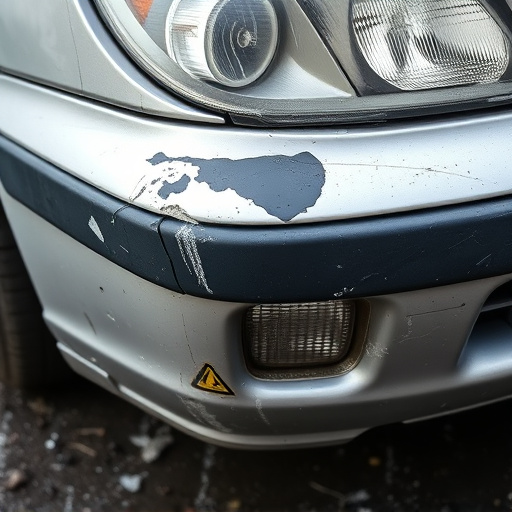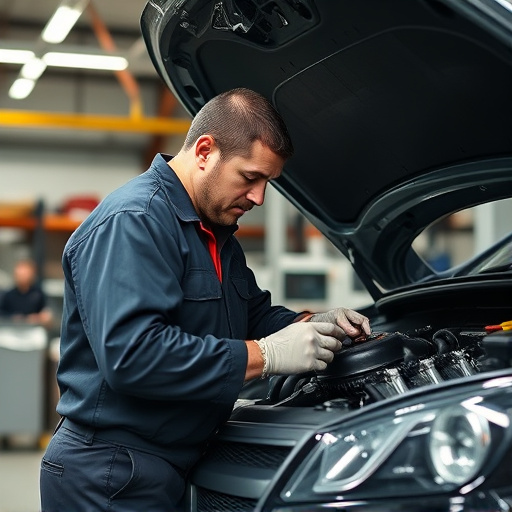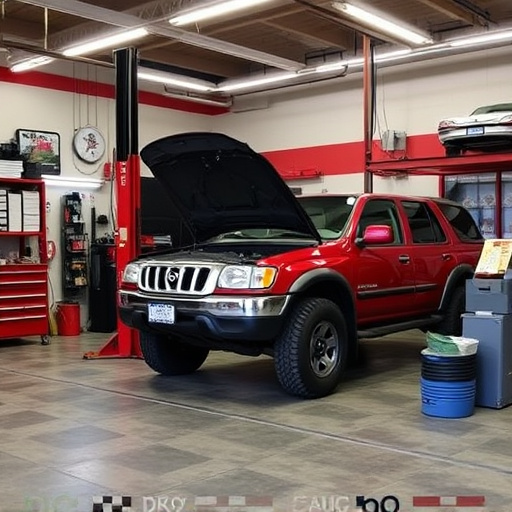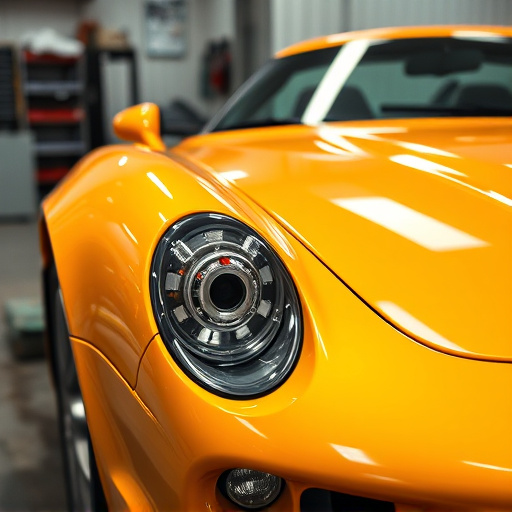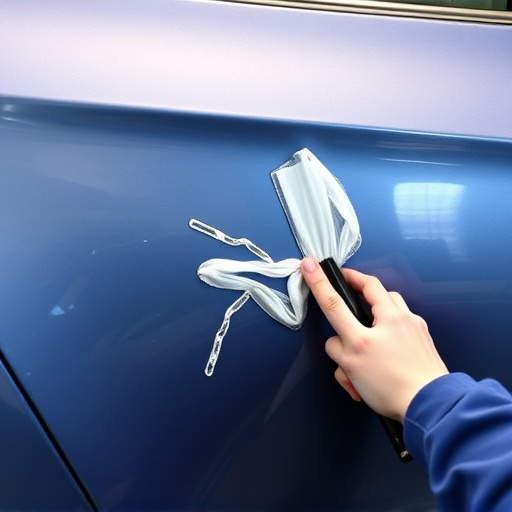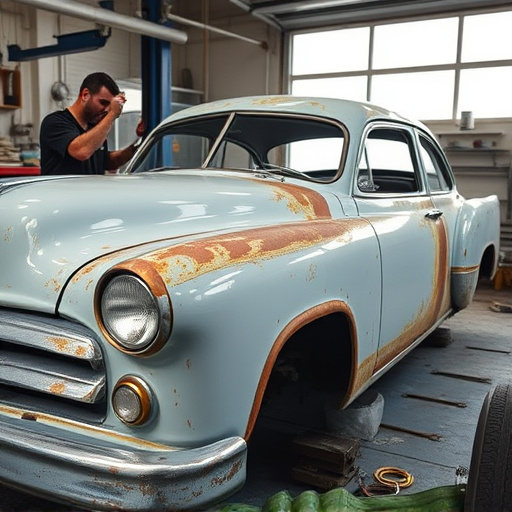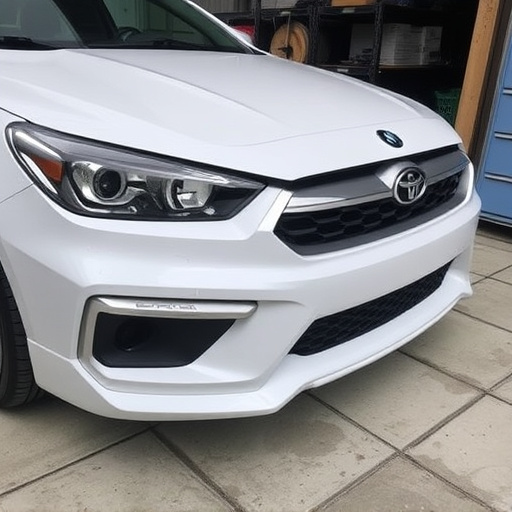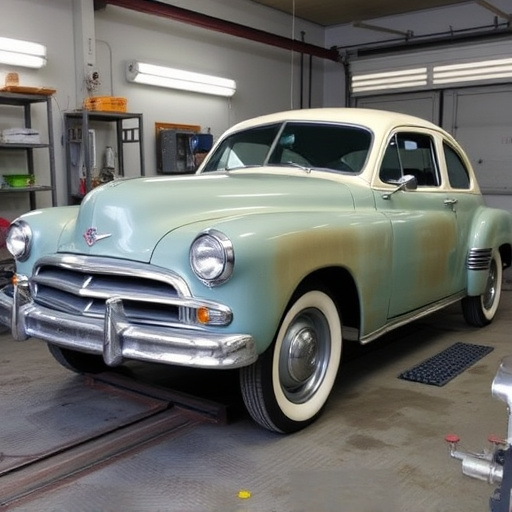Mercedes night vision calibration is a precise process using thermal imaging sensors to optimize safety in low light. Regular maintenance, including specialized repairs and frame straightening, ensures accurate calibration crucial for meeting safety standards and enhancing driver visibility. Proper calibration prevents distorted images and system malfunction, making it a game-changer in driving technology.
Mercedes night vision technology enhances driving safety in low-light conditions. However, for optimal performance, accurate calibration is crucial. This article delves into the significance of calibrating Mercedes night vision systems and outlines a step-by-step process using factory-specified procedures. Understanding these methods ensures your vehicle’s advanced driver-assistance system operates at peak efficiency, providing you with enhanced visibility and peace of mind during nighttime drives.
- Understanding Mercedes Night Vision Technology
- The Importance of Accurate Calibration
- Step-by-Step Calibration Process Using Factory Procedures
Understanding Mercedes Night Vision Technology
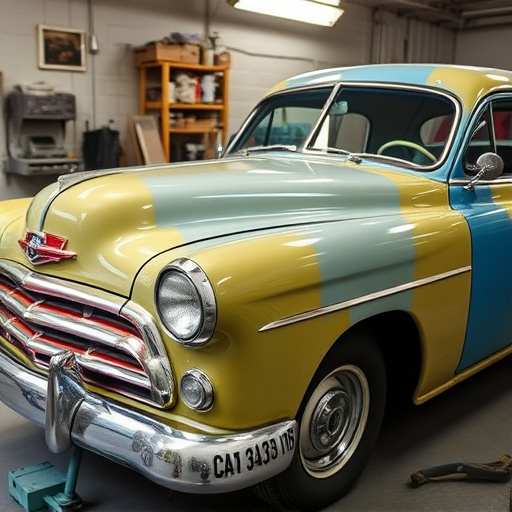
Mercedes Night Vision technology is a cutting-edge safety feature designed to enhance visibility and mitigate risks during low-light conditions. This advanced system utilizes thermal imaging sensors to detect heat signatures, transforming darkness into a clearer image for drivers. By calibrating the Mercedes night vision, we ensure its optimal performance. The process involves precise adjustments to the camera’s settings, ensuring it accurately interprets temperature variations in real time.
Proper calibration is crucial, as it directly impacts the system’s effectiveness. Factory-specified procedures guarantee that the Mercedes night vision not only meets but exceeds safety standards. Regular maintenance and expert intervention, including specialized autobody repairs and frame straightening techniques, are vital to preserving this technology’s integrity, ensuring drivers benefit from enhanced visibility without compromise, especially when dealing with subtle dents removal or complex collision damage repair.
The Importance of Accurate Calibration

Accurate calibration is paramount when it comes to Mercedes night vision systems. These advanced driver-assistance features rely on precise settings to ensure safe and effective operation, especially in low-light conditions. Improper calibration can lead to distorted images, reduced range, or even system malfunction, compromising the driver’s awareness of their surroundings. It’s akin to having a dimly lit, blurred window into the night—not ideal for navigating unfamiliar roads or unpredictable weather.
Regular Mercedes night vision calibration using factory-specified procedures is essential for maintaining optimal performance. This meticulous process accounts for environmental factors and ensures the system’s infrared camera captures clear, detailed images. Just as regular auto body repairs and auto glass repair maintain a vehicle’s structural integrity and visibility, proper night vision calibration safeguards the technology that enhances safety and drives better decisions in the dark.
Step-by-Step Calibration Process Using Factory Procedures

The process of calibrating a Mercedes night vision system using factory-specified procedures involves several precise steps to ensure optimal performance in low-light conditions. It begins with the installation of specialized equipment designed for accurate calibration, such as a test bench or a designated calibration area. Technicians then follow a step-by-step guide, starting by connecting the necessary sensors and cameras within the vehicle to the calibration system. This setup allows for real-time data analysis during the testing phase.
Next, the Mercedes night vision system is activated, and various scenarios are simulated to test its capabilities. These scenarios may include dark road simulations, pedestrian detection tests, and obstacle avoidance exercises. The factory procedures dictate specific performance criteria that must be met. Any deviations from these standards require adjustments to the system’s settings, often involving minute calibrations of sensors, cameras, and software parameters. Once the system passes all tests, it is deemed ready for installation in the vehicle, ensuring enhanced safety features through precise Mercedes night vision calibration.
Mercedes night vision calibration is a critical process that ensures the safety and effectiveness of this advanced technology. By following factory-specified procedures, owners can maintain optimal performance and reliability. Accurate calibration not only enhances nighttime driving visibility but also plays a vital role in preventing accidents, making it an essential aspect of Mercedes ownership. Understanding and adhering to the step-by-step process guarantees that your vehicle’s night vision system operates at its best, providing peace of mind on the road.

